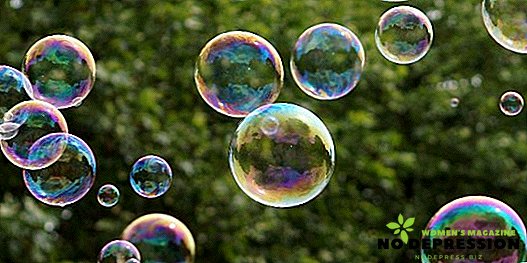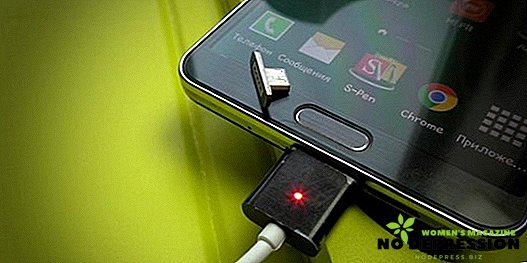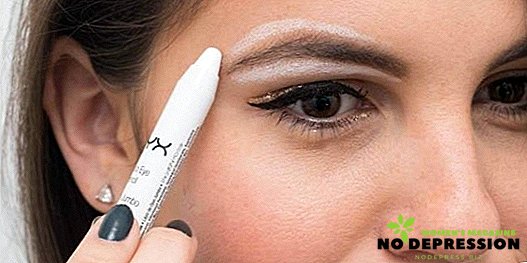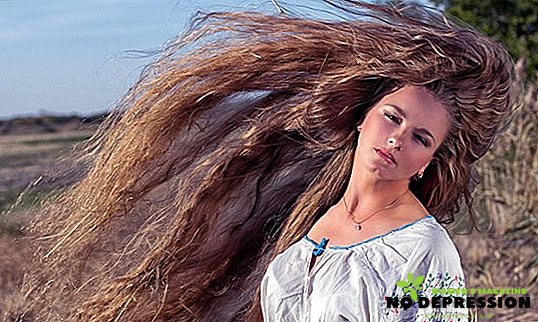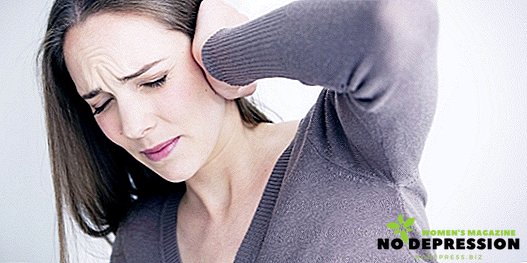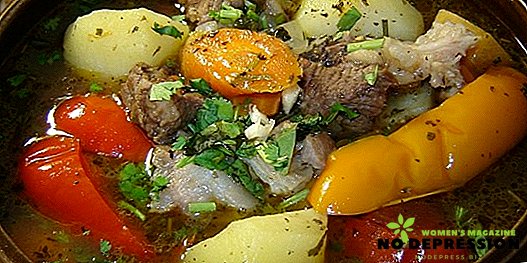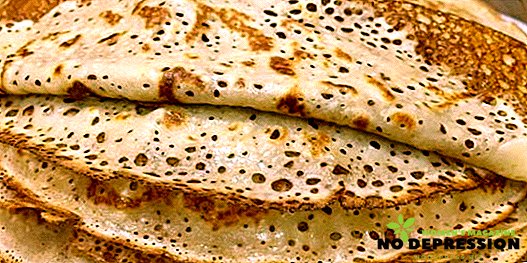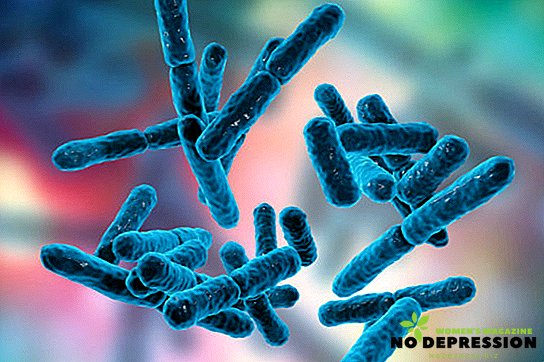Coloring is at the peak of popularity among all types of staining. A variety of types and methods of the procedure makes it easy to choose the "result" that will emphasize the natural beauty of hair of any length and with any natural shade.

Main types and methods of implementation
Coloring is a professional way of dyeing hair, which uses not one shade of paint, but from 2 to 15. All of them are similar in tone and are approximately in the same color scheme.
The meaning of the process is to divide the total mass of hair into sectors, and each sector into strands. Each strand is colored pre-selected shade.
Coloring can lead to a complete change in the natural color of the strands, as well as to its more beneficial underlining.
Each master has a special technique and types of coloring. In general, the following types of staining can be distinguished:
- vertical method - the total weight of the hair is divided into zones vertically, then, using from 3 to 18 shades, color strands of different colors. As a result, the effect of heterogeneity, contrasting transitions of shades, asymmetry;
- transverse (horizontal) coloring - it is based on the use of no more than 3 colors of paints. Further, the total mass of hair is divided into three parts horizontally. The lower part (tips) is painted with the lightest shade, the coloring is done with the help of small strands. The middle part is given a darker tone, and the roots - the darkest shade.

If we consider the techniques of performance coloring, we can distinguish the following:
- multicolor asymmetrical - strands of various sizes and in different order are taken, symmetry is not observed. They are painted in a lighter, but shade suitable for natural hair color, or they use the game in contrast;
- "salt with pepper" - often used for blond with a small amount of gray hair. The roots are stained in a lighter tone, then a smooth transition to dark tips is made;
- Neon coloring - suitable for brunettes at a young age. Strands are colored before lightening and only after that the coloring gel of various bright shades is applied;
- zone coloring - necessary for coloring certain areas of the head;
- coloring bangs - only those strands that are above the forehead are colored;
- patterned coloring - produced using a stencil with a pre-printed pattern. Usually the pattern is bright and contrasting.

Coloring and highlighting: differences
Consider the distinctive features of the two types of hairdressing procedures.
- Highlighting involves only straightening strands on one or several tones, coloring is the coloring in different shades (both with pre-clarification, and without).
- Highlighting is performed qualitatively only if there is no sharp transition between clarified and natural strands. In coloring often use the game of contrasting shades.
- Highlighting is preferred by those girls who wish to emphasize the natural beauty of hair, as well as women in adulthood who want to hide gray hair. Coloring is often chosen by those women who want to look as bright and impressive as possible.
The main advantages of coloring
The technique of coloring based on the use of a large number of shades during dyeing has the following advantages:
- makes thinner hair more luxuriant in appearance;
- makes natural color look more favorable, play in the sun due to several shades;
- emphasize the complexity of haircuts and styling, to focus;
- to give your hair a fashionable effect of strands sunburned.
Trendy combinations of shades for light brown and dark brown hair
Lately, at the peak of fashion, coloring of hair in light brown shades remains popular. If the natural hair color is light brown, then its owner does not need to make any fundamental changes. Best of all with light brown color will be in harmony shades close to him.
When choosing a color scheme for coloring on light brown and dark brown hair, it is important to remember that it should be in harmony with the color of skin and eyes. Blonde will look good with cool hues: pearl, beige, ash blonde, light walnut, flaxen.
If there is a need to choose a warm color scheme, then preference should be given to honey shades, caramel and chestnut - they will help make the light brown color deeper and more saturated.
Owners of dark blond hair when coloring preference should be given to the universal shades - caramel and golden from the warm range and ashy or platinum from the cold.
Coloring hair at home: possible drawbacks of the procedure
Should I do coloring of light brown hair by myself? Any procedure for changing the appearance, performed at home, is associated with the risk of an unexpected negative result.
Coloring is a complicated hairdressing art, therefore, performing it at home, be prepared to face a completely unplanned result. Thus, the resulting hair tone may differ from the intended due to the wrong color range.
The main factor due to which many girls strive to make coloring themselves at home is the high cost of the procedure in the salon. But it is important to remember that only the master can correctly choose the color scheme and follow the coloring technique.
Coloring hair in the salon
Salon coloring technique can be executed in longitudinal or transverse form. With longitudinal dyeing, the master dyes with different shades of the strand along the entire length, whereas with the transverse one, he divides the hair into 3 parts and achieves a smooth transition from dark roots to light ends.
 It is the transverse coloring and the quality of its performance that can speak about the level of professionalism of the master. This type of coloring in the process of hair growth does not give a sharp visible border between the regrown roots and the colored part.
It is the transverse coloring and the quality of its performance that can speak about the level of professionalism of the master. This type of coloring in the process of hair growth does not give a sharp visible border between the regrown roots and the colored part.
The master professional uses several dyes for durability for work: from those possessing minimal resistance to lightening. The barber before the procedure necessarily takes into account the general condition of the hair, whether it was painted earlier and by what means.
The main distinctive feature of coloring is the subtle and elusive transitions from one shade to another. To achieve this effect independently at home, without having professional hairdressing skills, it is almost impossible.
Coloring medium length blond hair at home
Fashion trends suggest that light brown hair of medium length after coloring should look as natural, feminine and refined as possible. To achieve this effect in the home helps technique "ombre."
The result of staining is suitable for women of any age. So, how at home to make coloring on light brown hair of medium length?
The ombre technique consists of the following steps:
- Head before the procedure can not be washed for 2 days. During this time, sebum will cover the hair and protect it from the negative effects of dye.
- Hair must be carefully combed.
- Prepare foil of different sizes.
- Divide the hair mass into 4 parts: the lower part will reach the earlobe, then leave about 1 cm of hair that will not be dyed, the middle part will start from the middle of the ear, the upper part will be left except for the bangs, the last one will be the bang itself. Strands fix hairpins.
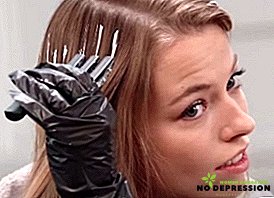
- If the hair was dyed earlier, then they need to be lightened.
- Coloring (bleaching) starts from the tips around the head with visible strands, each strand is smeared with paint to the desired length and wrapped in foil. Leave the strands at 15-20, periodically monitoring the result.
- After the desired lightening effect is achieved, the next step is to create a smooth transition on each strand. To do this, the tips are released from the foil, and it is moved along with the paint a little higher to the unpainted part where there is a border between the clarified and the natural area. Leave in this form for another 10 minutes.
- After staining, the composition should be thoroughly washed off.
- Apply a mask or a balm for dyed dry hair.
How to do coloring on light brown short hair at home
Coloring of blond short hair is most advantageous; see if it is made in the transverse technique, when with the help of several shades of dyeing composition the entire head of hair comes from head to tip with a smooth transition from dark to light. Consider step by step instructions.
Transverse coloring requires compliance with the following steps:
- Selection of 2-3 shades close to natural color.
- Conventionally, the hair mass is divided into 3-4 zones across the head.
- Coloring start with bangs, then gradually make a smooth transition to the tips.
- Take small strands (no wider than 0.5 cm), smeared with dye and wrapped in foil.
- The hue of the paint varies depending on the area to be painted. Usually the roots are painted with the darkest shade, and the tips are brightened.
- The staining time depends on the result to be obtained, so the process is strictly controlled every 5 minutes.
- After dyeing, the composition is thoroughly washed off and a nourishing balm or a mask for dry hair is applied.

Light color on light brown hair
Blonde shade is at the peak of fashion among professional hairdressers for several seasons. Radically changing their color is not recommended.
Coloring for light brown hair should be directed to their light brightening, which will give them a play of color, a natural and well-groomed appearance. A great option for light coloring for the light brown shade of the hair is the use of the California dyeing technique.
As a result, her hair looks as natural as possible, creating the effect of easy burning out in the sun. The roots are darker, and from the middle of the head begins a smooth transition to a lighter shade. The hairstyle looks warm and natural, adding femininity to its owner.
California coloring is suitable for all shades of natural light brown color.
Hair care after coloring
After coloring, the hair becomes most susceptible to the effects of aggressive environmental factors, so they should be followed by comprehensive care. Stylists recommend:
- Immediately after the procedure, purchase a high-quality series for the care of dyed or dry hair, consisting of shampoo, balm and mask.
- As rarely as possible, use a hairdryer, tongs, or an iron for styling and drying.
- You can not wash your hair more often 2 times a week.
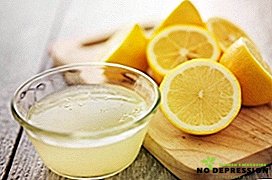
- To add shine to the strands, rinse them with warm water and lemon juice.
- The sun's rays are harmful to colored strands, so the hair should be covered with a hat and scarf.
- If yellowness began to appear on the colored strands, then a decoction of chamomile will help to cope with it.
- As natural remedies for making masks, oils and honey are excellent.
- During styling, it is better not to use varnishes and mousses, which can further dry the hair.
Coloring is an excellent method to revitalize the color of light brown hair. This coloring is suitable for those who do not want to drastically change their image, and only wants to make it more feminine, give a well-groomed look and shine to curls.
How is the process of coloring can be seen in the next video.




